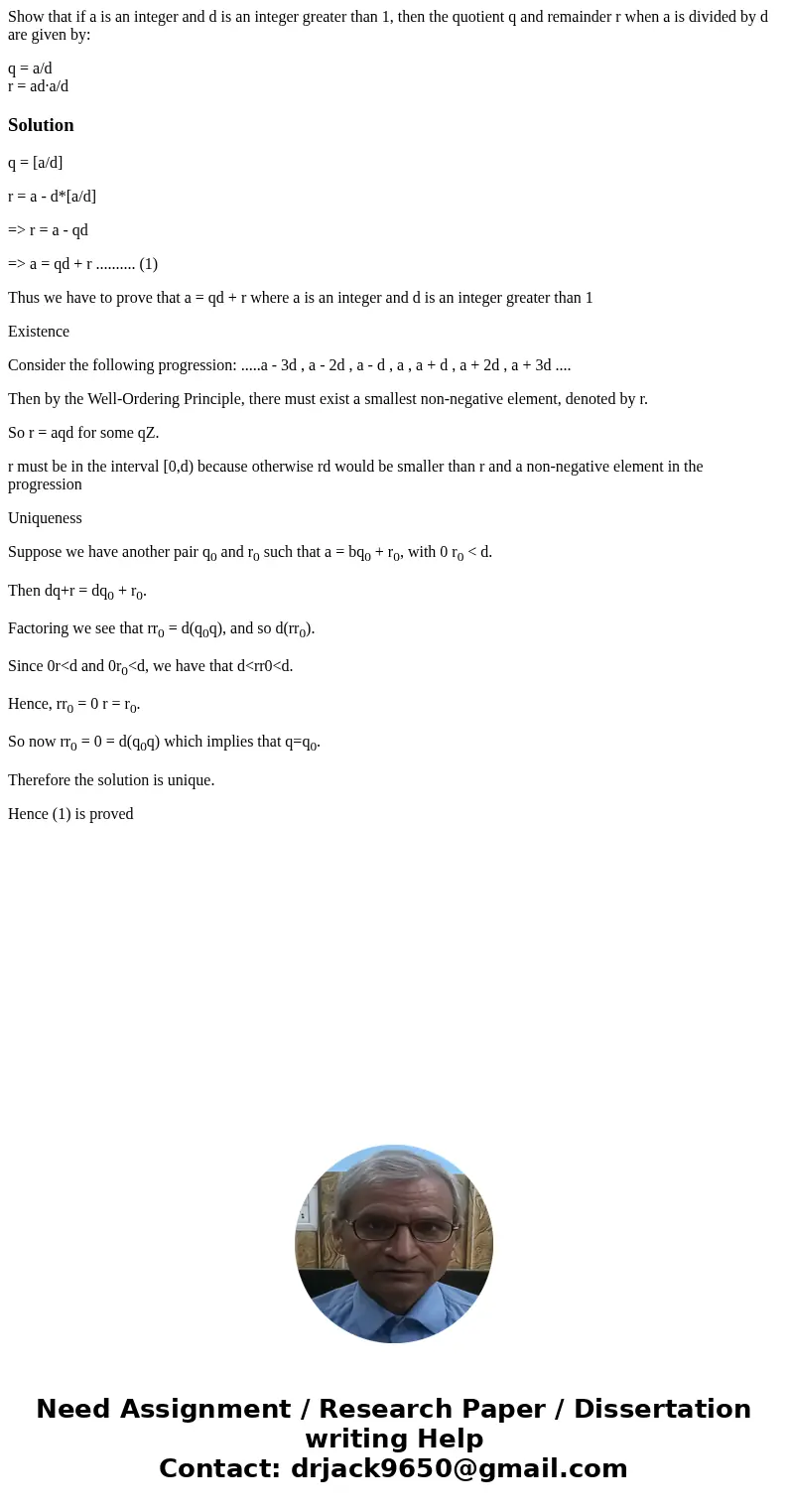Show that if a is an integer and d is an integer greater tha
Show that if a is an integer and d is an integer greater than 1, then the quotient q and remainder r when a is divided by d are given by:
q = a/d
r = ad·a/d
Solution
q = [a/d]
r = a - d*[a/d]
=> r = a - qd
=> a = qd + r .......... (1)
Thus we have to prove that a = qd + r where a is an integer and d is an integer greater than 1
Existence
Consider the following progression: .....a - 3d , a - 2d , a - d , a , a + d , a + 2d , a + 3d ....
Then by the Well-Ordering Principle, there must exist a smallest non-negative element, denoted by r.
So r = aqd for some qZ.
r must be in the interval [0,d) because otherwise rd would be smaller than r and a non-negative element in the progression
Uniqueness
Suppose we have another pair q0 and r0 such that a = bq0 + r0, with 0 r0 < d.
Then dq+r = dq0 + r0.
Factoring we see that rr0 = d(q0q), and so d(rr0).
Since 0r<d and 0r0<d, we have that d<rr0<d.
Hence, rr0 = 0 r = r0.
So now rr0 = 0 = d(q0q) which implies that q=q0.
Therefore the solution is unique.
Hence (1) is proved

 Homework Sourse
Homework Sourse